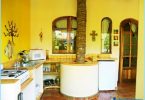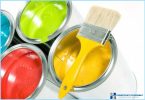The contents
- Water-dispersion paint – what it is
- What is water-dispersion paint
- The main characteristics of waterborne paints
- The scope of water-dispersion paints
- Properties of water-dispersion paints
- How to choose the right paint
- Where to start decorating
- How to apply waterborne paint on the ceiling, facade, wall
- Safe to use
It’s time for a repair? This means, probably had a question and a problem number one: what paint to choose? After all, it must be suitable for the realization of unique design ideas and to be of high quality, safe and pleasing to the eye for a long time.
These requirements correspond to water-dispersion paint. It is a great success in the field of construction. Its advantages are environmental friendliness and heat resistance. In addition, the painted surface looks aesthetically very nice.
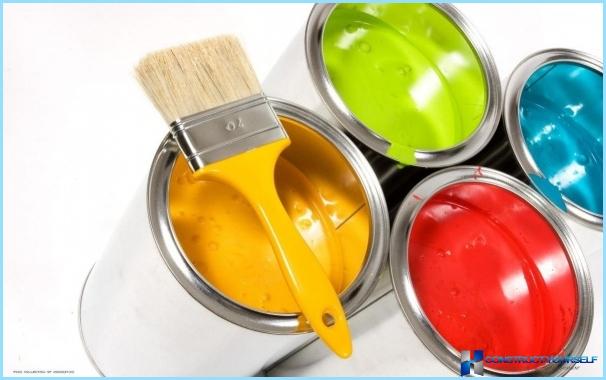
Water-dispersion paint – what is it ↑
Paint material made on the basis of synthetic polymers, the diluent is water. Due to this it is environmentally friendly and is not a combustible material.
The word «dispersion» it means that the material consists of a mixture of the solid components in the liquid. They are necessary for the highest viscosity and density. After the material is applied to the surface, dispersion coating hardens due to the evaporation of water. That is why water-dispersion paint is water resistant. It looks like a liquid paste and diluted it with water immediately before use.

Use of such a composition for the decoration of the interior space of the apartment or house, to overhaul and to change the appearance of facades of houses and cottages.
Water-dispersion paints are considered to be very economical and extremely convenient during application. This allows you to make a choice in their favor, such as when painting ceilings. Apply the material using brush, roller or spray.
When looking at water-dispersion paints for decorative works, should focus on the white color. In order to get a new color or shade need to use kolorowania when using special dyes. In the range there are pigments that mimic bronze, gold, silver.
To do so, preferably in advance and not on the object if the right color is critical. After all, to get the desired color and keep the proportions isn’t always easy. Even harder to repeat it!

What is water-dispersion paint ↑
The main components in the composition of this material are:
- pigments. Thanks to the pigment ink has a specific color that is needed by the client;
- the film formers. Substance binding, they are necessary in order to form a polymer film. It holds all the other components. The quality of foaming agent depends on the durability of the coating;
- fillers. They can be natural or synthetic, such as marble chips or talc. Fillers improve the performance of your paint.
- supplements special purpose.

The main characteristics of waterborne paints ↑
A finishing material is completely bladeless and environmentally friendly. Moreover, it has no smell. We present the main facts why you should choose this type of paint:
- there are no organic solvents;
- paint does not smell;
- easy to use (does not spread);
- prevents the appearance of fungus or mold;
- fireproof;
- durable;
- dries quickly (from one hour to two);
- affordable;
- not sensitive to mechanical stress.
In addition, some types of water-dispersion paints are suitable for bathroom and kitchen as are reasonably water resistant. Paint with a minimum resistance should not be used in those areas where humidity is very high.
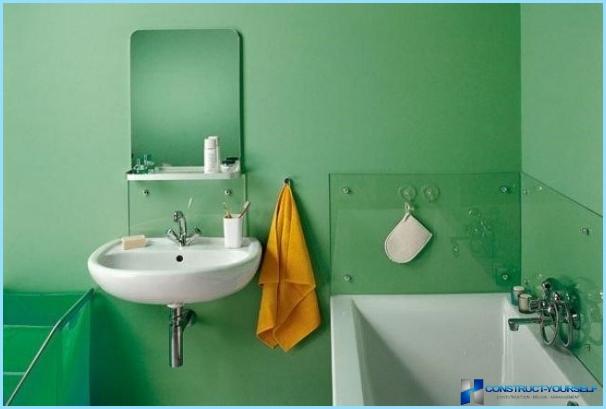
How to know waterproof paint or not? Place it on any sample and put it in a container of water for a day. If it is water-resistant bubbles and swellings on the surface will not be formed.
The scope of water-dispersion paints ↑
Why the need for water-dispersion paints? The scope of this material is very extensive. Mostly they are needed for wall decor, painting of ceilings and facades of houses.
The paint can be applied on metal, wood, brick or concrete. Preliminarily the surface should be primed.
Water-dispersion paint, you can cover the trees, as protection from rodents, cold or hot weather temperature changes. This again speaks of the purity and safety of the material for our nature.

Properties of water-dispersion paints ↑
Specifications and properties of such material depend on the polymers that were used as coupling elements.
- Polyvinyl acetate dispersion – suitable for ceilings and walls. The room must be dry, not used for facade work as they have minimum water resistance.
- Styrene butadiene dispersion – water-resistant, but sensitive to light effect (yellow). It is not advisable to use exterior repairs. Perfect for painting walls in rooms with dim light.
- Acrylic dispersion – versatile for any finishing work. Considered water resistant and not sensitive to light. Bright colors durable. They are very easy to apply and fast to dry, and for better coverage it is recommended to apply two finish coats of paint. The coating is breathable and elastic.
The price of waterborne paints depends on a huge number of important factors. Each type differs in the area of its application in use has its own pros and cons. The choice is to do starting from what is the properties of the paint material interest in this situation
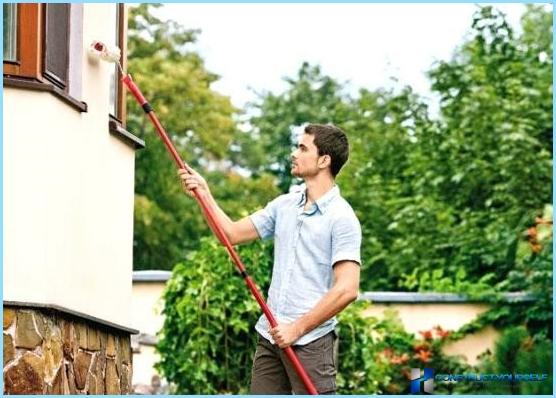
The cheapest kind of them is water-dispersed polyvinyl acetate paint. The most expensive acrylic.
How to choose the right paint ↑
When buying this material, be careful. Pay attention to the following points:
- Firm-manufacturer. A big plus would be to make a choice in favor of a popular brand, which has already established itself on the market. Cheap and unknown brand may not be a guarantee of success, and to do the repair twice do not want anyone;
- How the room is consecrated;
- What are the moisture requirements;
- The surface to be decorated;
- Is there a quality certificate;
- The shelf life of the product;
- Storage conditions.

Where to start decorating ↑
Paint bought, morale is available, and it is time to prepare the room for the repair. First clean the surface for painting from dust, grease and other dirt. Not cleaned the surface may be difficult to comprehend the material.
Cracks and loose places should be pre-leveling with cement. If you have a fungus or mold please remove it with detergent and a stiff brush. Also recommended for twelve hours, then apply a mixture of fungicide, it will help to get rid of unwanted germs.

Metal, wood, brick or concrete surface must be primed. After the surface is prepared you can proceed to further work.
How to apply waterborne paint on the ceiling, the facade, walls ↑
We have prepared some practical tips for applying material on walls and step by step instructions. After reading it, you will be able to get to work, but for clarity, you can see a video on how to paint the surface
- thoroughly stir the mixture;
- if the surface is painted for the first time, apply the primer and wait one to two hours;
- to get the desired shade of white paint the pigment is added. It prior to mixing, moisten in water;
- apply the first layer of water-dispersion paint from the window, parallel to him;
- with a roller, brush or sprayer, apply one to three layers. The spacing between layers is 4 hours. The number of layers depends on the quality of the processed surface;
- the consumption of water-dispersion paints is approximately 140-180 g/m2.
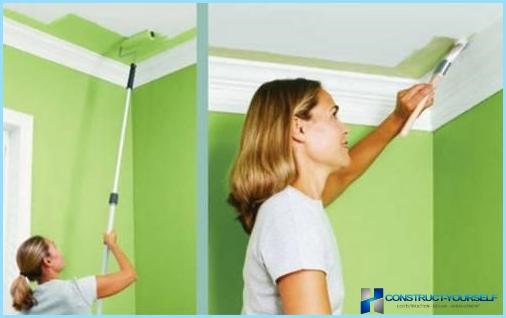
Safety when using ↑
Be sure to take care of their own security before starting work on the painting of walls or ceiling. On the face and hands, apply a rich cream and eye protect glasses. Ventilate the room if you paint inside the room.
Keep a water dispersion paint GOST 9880.5 need at a temperature of 0-30 °C. Be stored at temperatures up to 40°C below zero, but for do not hurt one month.
We wish you a successful completion of repairs and decent for a lifetime!


